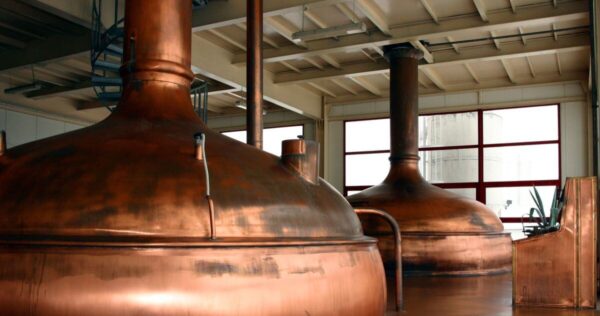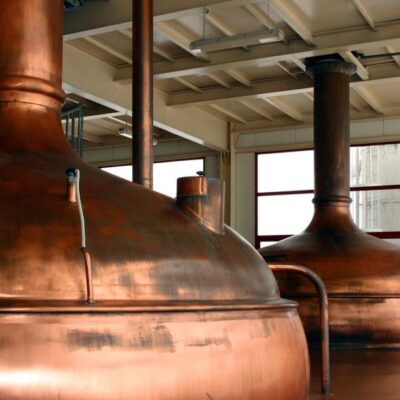What’s in your name?

Our lives are changing rapidly, and suddenly it turns out that we grew up wrong, eat the wrong food, and what we read is some kind of enemy literature. Then everything goes back to normal, only to be disproved again by the next researcher who has recently written his dissertation.
If things were like this all the time, the world would have gone crazy long ago. Fortunately, there are some beacons in our lives that shine a steady, unblinking light on us. These are the ones that remain our reference points in an ever-changing reality. This is especially true in religion: just imagine for a moment: the Torah, the holy book of the Jews, has remained unchanged for several millennia!
You don’t have to be a religious person to not lose your beacon – secular people have their holy books too. For example, every self-respecting brewer has a book by brewing guru Wolfgang Kunze. It has been translated into many languages, reprinted many times, but is still as relevant as ever.
At my beer lectures I am often asked about the chemical composition of beer, is beer good for regular consumption? Today, after re-reading the relevant sections of our bible “Malt and Beer Technology” by Wolfgang Kunze, I decided to publish this information. Some may find it boring and some may find it necessary for medical reasons – you decide for yourself.
Water makes up most of the beer, about 91-92%, about 5% of the beer volume is alcohol. The beer extract consists of about 75-80% carbohydrates, in particular dextrins (maltotetraose, maltopentaose) and very little maltoriose. 6-9% nitrogenous compounds, 4-5% glycerol (glycerine) and also β-glucans, inorganic compounds and bitter substances, organic acids and a number of compounds which, despite their low concentration, have a large effect on the quality of the beer.
Nitrogen compounds are important in the composition of the extract. The following values can be considered normal:
| Total nitrogen in beer | 900 – 1100mg/l |
| Coagulable nitrogen | 18 – 20 mg/l |
| MgSO₄ | 130 – 160 mg/l |
| a-amino nitrogen (FAN) | 80 – 120 MG/L |
| Formol nitrogen | 160 – 210 mg/l |
80-85% of this nitrogenous material is derived from the malt and about 10 to 15% from the yeast. They affect the foam and the fullness of the flavor.
One of the by-products of fermentation is glycerol, and pale beers contain 1400 – 1600 mg/l of it.
Beer contains various minerals that mostly come from the malt and affect the quality of the beer.
| Inorganic substances | Amount in beer (mg/l) | Physiological effects in humans |
| Sodium | 30 – 32 | low sodium content desirable |
| Potassium | 500 – 600 | daily requirement about 250 mg, good for prophylaxis against infraction; a high potassium content is diuretic |
| Calcium | 35 – 40 | can prevent heart diseases |
| Magnesium | 100 – 110 | lowers the cholesterol level, beneficial effect on cardiac activity |
| Phosphate | 300 – 400 | important constituent of bones and teeth; responsible for energy storage and transmission |
| Sulphate | 150 – 200 | without important effect |
| Chloride | 150 – 200 | daily requirement of humans is about 2500 mg |
| Nitrate | 10 – 80 | nitrate can be converted to nitrite which is harmful to health. The amount of nitrate in beer is usually below the legal limit of 50 mg/l for drinking water and is harmless. |
Other substances also present in the extract at low concentration but, sometimes, with large qualitative effect are, for example:
β-glucans – 120-400 mg/l
anthocyanogens – 5-50 mg/l.
The phenolic compounds contained in beer, especially the anthocyanogens, are very effective, in particular those with low molecular weight because:
- they are bactericidal
- they affect cardiac activity and counteract stomach cramps
- they contribute to the absorption of iron and magnesium
- they have a very strong reducing power and inhibit oxidation
The nutritional and physiological importance of beer is very great. Putting aside the everyday ideas about the effects of alcohol, there are many justifications for beer’s popularity.
- Beer quenches thirst better than other drinks
- Beer stimulates appetite
- Beer stimulates digestion
- Beer has a strong diuretic effect; it is even used by urologists to “flush the kidneys” and remove kidney stones.
- Beer does not make you fat – moderate beer consumption does not change body weight
- Beer has a mild sedative effect
- Beer contains valuable B vitamins (B₁ and B₁₂) and a lot of vitamin PP (nicotinic acid).
Studies in recent years clearly show that moderate consumption is not only not harmful, but on the contrary [1,2].
- Beer does not lead to obesity, because it is not beer that makes people crave food. With moderate beer consumption, body weight does not change or, if the total energy intake of the body remains constant, even decreases.
- Moderate beer consumption helps to reduce fat deposition because alcohol inhibits fat metabolism. In addition, moderate beer consumption has a favorable effect on blood clotting and blood pressure regulation.
- Moderate beer consumption has a positive effect on the protective effect of cholesterol (HDL). At the same time, it reduces the part of cholesterol (LDL) that contributes to atherosclerosis. Thus, moderate beer consumption reduces the risk of myocardial infarction.
- There is evidence that people who consume small amounts of alcohol are less likely to suffer from cardiovascular disease than those who do not drink at all. At the same time, there is an increased mortality rate among heavy drinkers.
- Consuming beer in moderation lowers blood sugar levels, leading to an increase in insulin and improved insulin response. Not only does this affect blood sugar levels, but also fats.
- People who drink beer moderately tend to have lower blood pressure than those who don’t drink it at all. Due to this there are positive changes in hormonal, water and electrolyte metabolism.
- Beer promotes urine excretion; more table salt is excreted, while potassium and magnesium excretion is inhibited. High alcohol consumption has the opposite effect.
- Moderate consumption of beer does not lead to a deficiency of magnesium and potassium in the body. Recently, the special protective effect of so-called antioxidants (polyphenols) has been actively investigated. These substances not only protect the vascular system, but also reduce the risk of cancer and myocardial infarction.
In general, studies confirm that moderate drinkers have a reduced risk of myocardial infarction and cardiovascular disease compared to nondrinkers or heavy drinkers. Extensive studies [1] have shown that mortality and total cardiovascular disease are minimized in people who consume 20 to 40 g of pure alcohol daily, which corresponds to the consumption of up to two bottles of beer per day. Annual statistical studies have found that twice as many of those who die are teetotalers as moderate drinkers. The number of deaths was always higher among people who consumed more than 40 g of alcohol per day.
In quantitative terms, consumption of one to three bottles of light alcoholic beverage (on average – two) per day (which corresponds to 13-39 g of alcohol (on average – 26 g) should be considered as moderate [2]. In terms of beer, this amounts to I to 3 bottles of 0.33 liters (on average – two bottles of 0.33 liters) with an alcohol content of up to 40 g (or 50 ml) per liter.
Here we may quote Prof. Pendl’s phrase, which has become a popular in Germany: “One beer is better than no beer. Two beers are better than one beer. Four beers, however, are not twice as good as two beers.”
In the article materials of the books were used:
W.Kunze “Technology Brewing and Malting”
- KLUTHE, R., u. KASPER, H.: Alkoholische Getränke und Emährungsmedizin; Georg Thieme Verlag Stuttgart + New York, 1998
- PIENDL, A.: Brwlt 20/21 (1998), S.922-929















